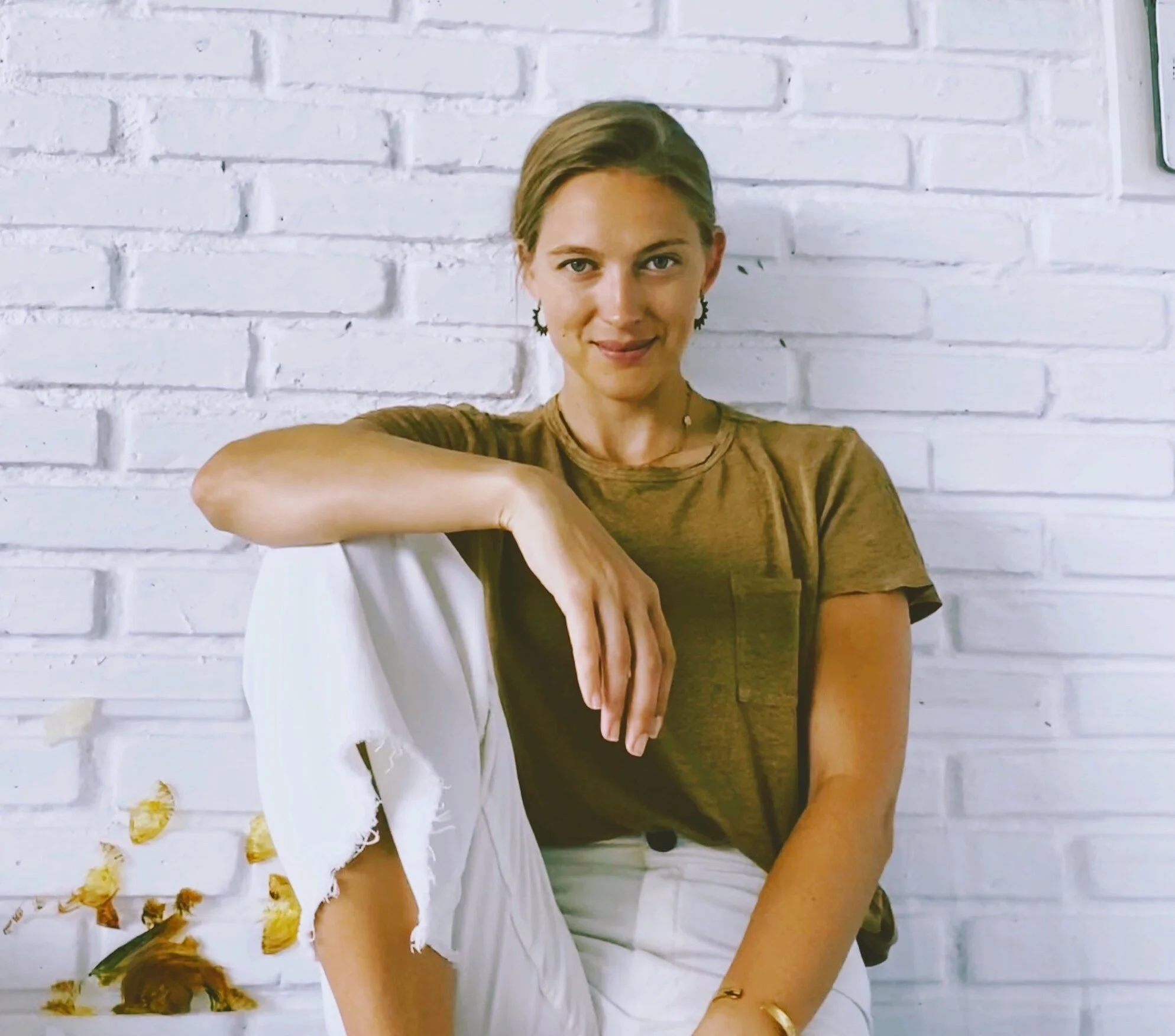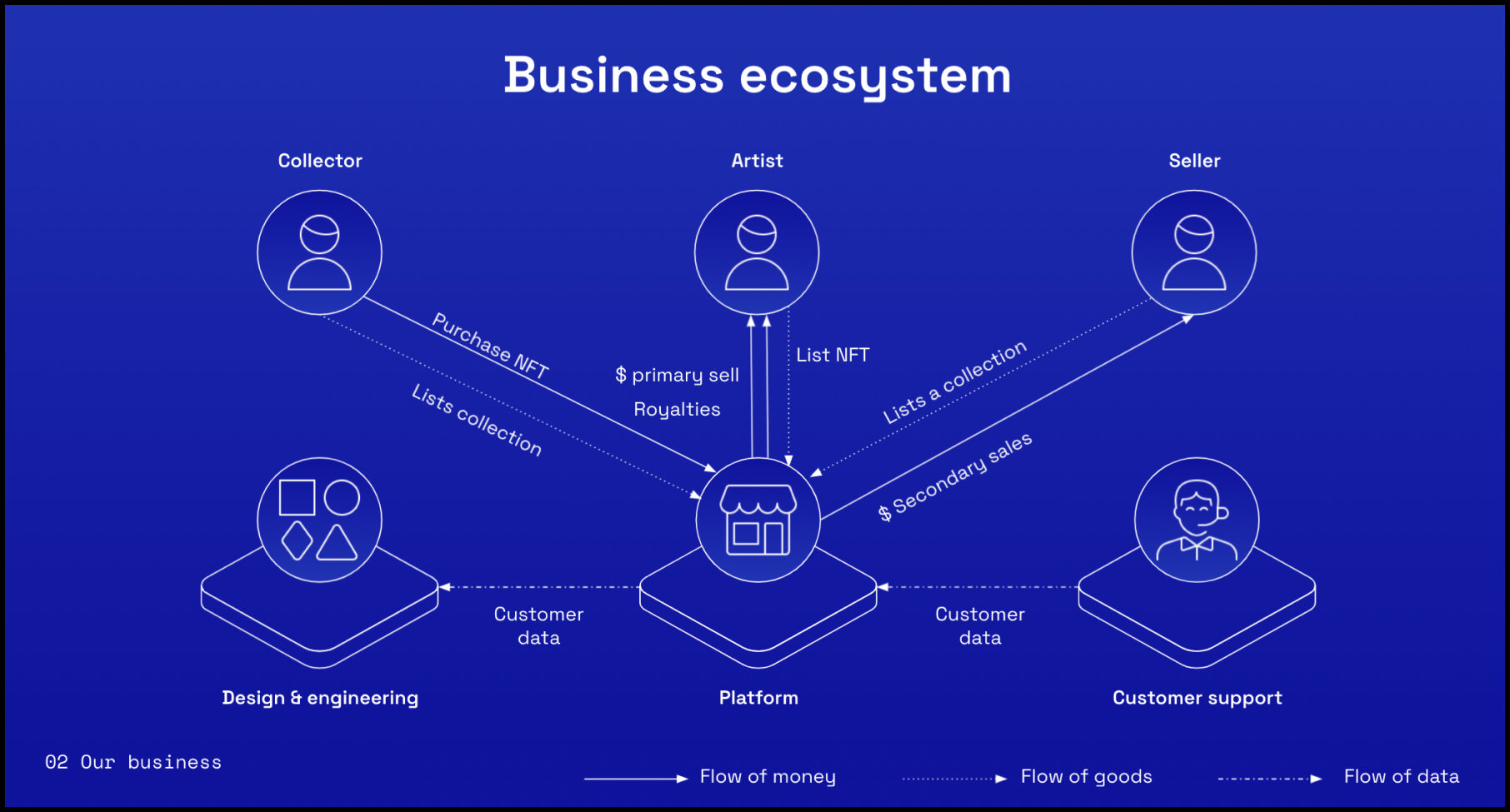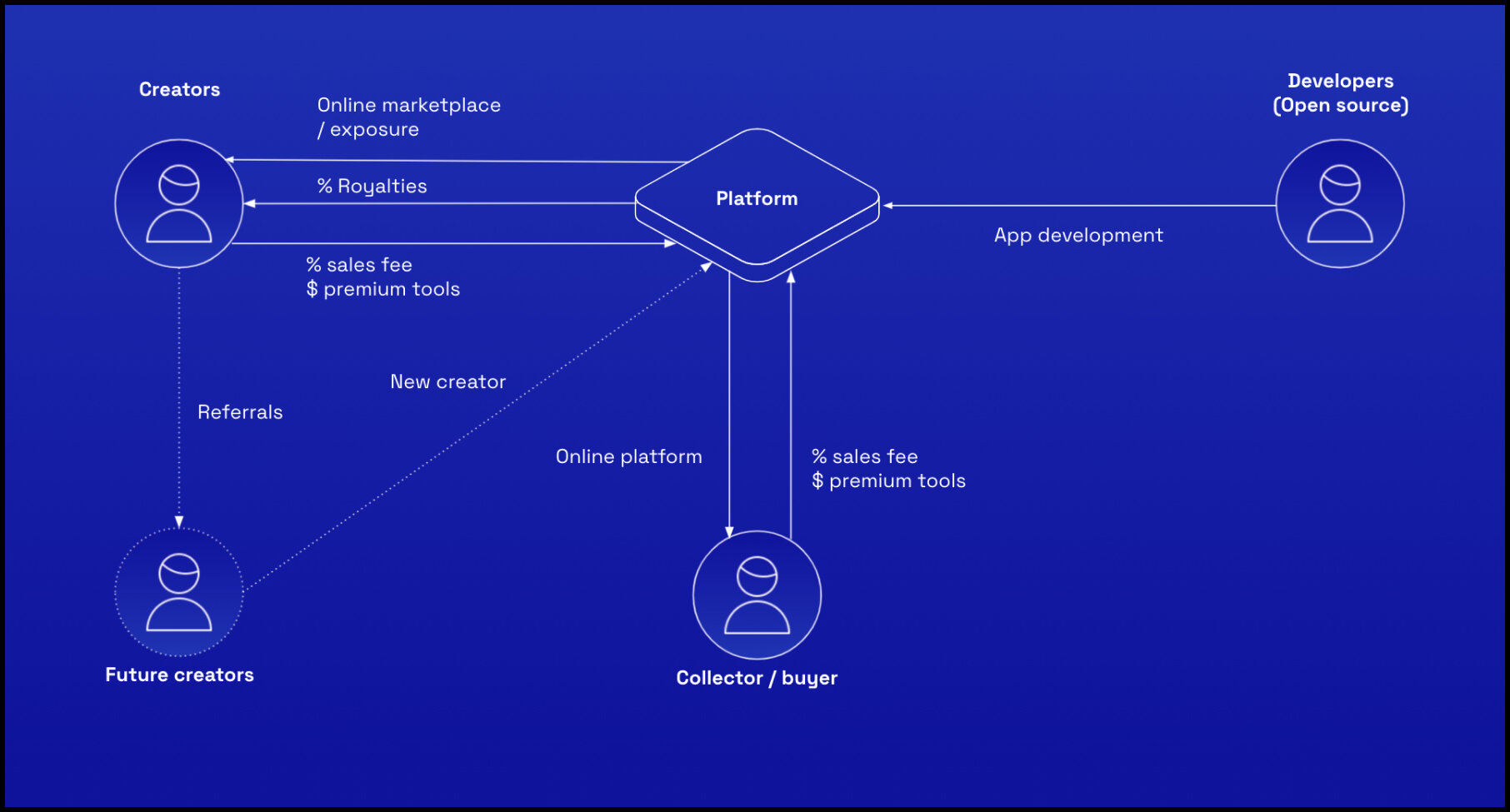How Liene Pitched an NFT Startup to Investors
Liene is an award-winning lead product and business designer working between Asia & Europe who’s passionate about environmental and community impact. She’s a cross-cultural expert and has ample experience designing digital solutions across a range of geographies, including Africa, Asia, Europe, and North America.
By Liene Geidane, d.MBA alum, with contributions by Clare Goldblatt
The buzz surrounding Non-fungible tokens, (NFTs), piqued my interest and made me wonder about the potential to create a business with NFTs as the anchor. NFTs are part of the Ethereum blockchain technology and are designed to indicate the legitimate and singular ownership of a digital entity, which could allow artists to sell their digital art online in a crypto marketplace that renders a buyer as the singular owner.
To find out more about the viability of a NFT platform, I found a business partner and we did some preliminary research, including competitive research and prototyping with numbers, to see if there was enough potential to create an NFT platform for artists to sell and customers to buy their NFT art using regular payment gateways.
Despite the burgeoning interest in NFTs, the processes involved buying them as a customer and selling their art as an artist are still not straightforward, especially if you’re not already familiar with cryptocurrency. Additionally, it’s expensive to post your artwork via blockchain as the transaction fees take a sizable amount of the artists’ profit. Despite these challenges, the prototyping with numbers and competitive research still solidified our hypothesis that there was a lot of untapped potential in creating an NFT platform.
“A great source of our research was the clubhouse app. We would just jump into these chats and ask for the pain points involved with NFTs, so it was quite easy to get the information quickly.”
After this preliminary research, my business partner and I wanted to take our concept further, so we decided to turn this idea of creating an NFT platform into a potential business. We got in touch with a Venture Capital (VC) company from Canada and created a pitch deck for them. Proving that your business idea would be able to make money is the most crucial aspect in a pitch deck, but this is exceedingly difficult when your product doesn’t exist yet.
Because I’d already done the d.MBA, I remembered the processes and tools and saw it as an amazing opportunity to see if I could come up with a company from scratch.
“To showcase this startup’s forecasted financial potential, we focused on demonstrating its business ecosystem map.”
This visualizes your startup’s possible concept for generating reliable revenue streams and solidifies its viability by showing the flow of information, goods, and money.
The pitch deck essentially needs to show on the first few slides the who--the team behind the idea, the why--why we’re doing it, and how--the organizational and financial plan. And then we were basically showing, this is the platform, we have artists, buyers, and collectors.
The business ecosystem map helped us answer key questions like if we needed to partner with someone or if we could provide the resources in-house; in addition to seeing which players were necessary and which could be taken out. It was also an extremely useful visual as potential workstreams, flows, and challenges became immediately apparent.
“The business ecosystem map is an ideal combination of business and design as it explains business viability in a visual, interactive way.”
We even have a couple of variations of this business ecosystem map, and it's something we keep iterating upon, based on feedback after every pitch session.
Of course, there’s been a sizable learning curve for me pitching a potential business and working with VC firms, both for the first time. One thing that I had to learn was that VCs are busy and very money-focused, so they don’t have time to go over unnecessary details. We’ve trimmed down the pitch deck from 24 slides to less than half of that, and we were told that our business model and how we’ll be profitable need to be made clear by slide 5. The business ecosystem map is right at the beginning of our improved pitch deck, whereas it used to come later in previous versions.
“I’ve learned that it’s important to not be too overly-attached to your ideas and after every time we do the presentation, we iterate and improve upon the deck together.”
Now, we’re in the phases of negotiating the terms with the VC and are working on getting the MVP off the ground. There are many challenges we’re still facing, including finding a means of reducing emissions in the energy-demanding cryptocurrency space, in addition to navigating the generally volatile blockchain markets. We’re learning to do additional research, ask for advice from the experts, and think things over before jumping in. The business confidence I gained doing the d.MBA pushed me to experiment and figure things out as I went along. Raising money for a startup has been a huge learning lesson for me and I’m looking forward to experiencing the next steps.



